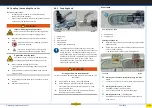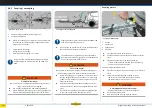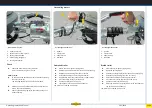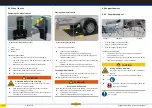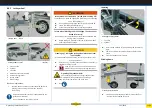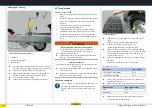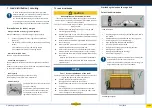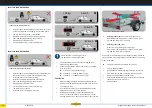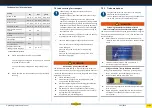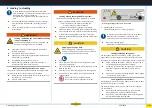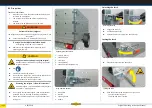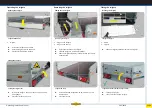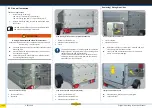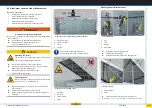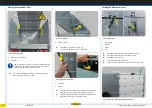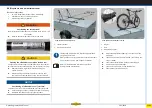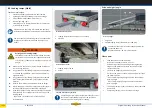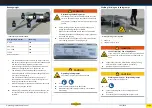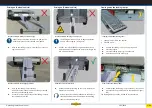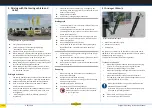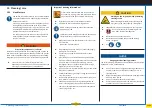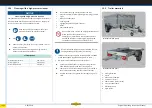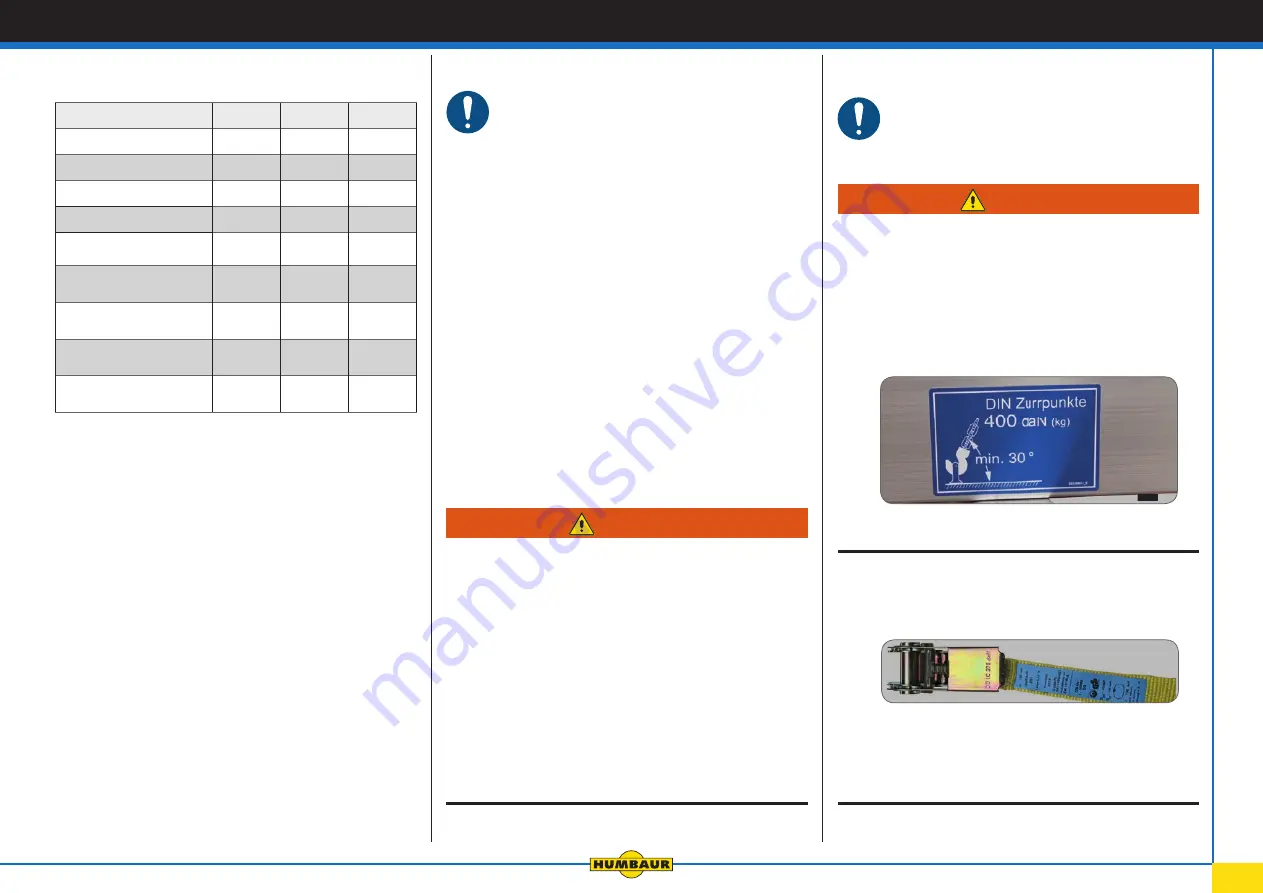
Operati ng Instructi on Manual
V 03/2018
25/56
Fricti on values / Material pairs
pairing
dry
wet
greasy
Wood - wood
0.2 - 0.5
0.2 - 0.25 0.05 - 0.15
Metal - wood
0.2 - 0.5
0.2 - 0.25
0.02 - 0.1
Metal - metal
0.1 - 0.25
0.1 - 0.2 0.01 - 0.10
Concrete - wood
0.3 - 0.6
0.3 - 0.5
0.1 - 0.2
Steel frame - wooden
surface
0.4
0.4
Wooden beam - wooden
surface
0.5
0.5
Anti -slip mat with all mate-
rial pairings
0.6
Plasti c / mesh box pallet -
on screen fl oor
0.25
Rubber tyre on steel
loading surface (approx.)
0.3
0.1 - 0.2
Table: Fricti on force factor
►
Secure the goods positi vely or non-positi vely.
1. positi vely: goods arranged in such a way as to fi ll whole
cargo bed so it cannot slide.
2. non-positi vely: by lashing down using lashing straps,
etc.
►
Where possible, combine positi ve and non-positi ve load
securing.
7.2 Load securing for transport
Load securing is an important safety point when
transporti ng goods.
Adhere to nati onal and if applicable internati onal regu-
lati ons.
The goods must be safely and securely lashed to the
vehicle in accordance with regulati ons according to StVO
(German Road Traffi c Act) / StVZO (Road Traffi c Licensing
Regulati ons), VDI 2700 ff ., BGV D29 (German Employers'
Liability Associati on) and DIN 12642 or other permitt ed
fastening aids may be used which are strong enough for
the respecti ve load.
•
The driver, vehicle owner, shipper and sender are equally
responsible for the safety of the goods.
•
There are three obligati ons that only aff ect the driver:
1. Duty to check load securing and load distributi on
before setti ng off .
2. Duty to check and recti fy load securing during
transport.
3. Duty to adjust driving style according to the load
(adapted driving style).
WARNING
Unsecured / poorly secured load!
The load can shift while driving - while turning sharp corners, on
uneven road surfaces or when driving on steep roads (mountains)
- which can unbalance the trailer or cause the goods to be thrown
directly out of the trailer.
►
Secure the load properly.
►
Make sure that the goods are secured positi vely and
non-positi vely before driving off .
►
While driving (during breaks from driving) check that the
goods are sti ll secure - if necessary re-ti ghten it.
►
Pay att enti on to nati onal regulati ons on load securing.
►
If applicable, pay att enti on to special transport and secur
ing regulati ons for specifi c goods.
►
If applicable, fi t more lashing points.
7.2.1 Tie-down opti ons
Tying the load across the drop sides or by wrapping
around the chassis is prohibited!
For non-positi ve securing of the goods, you need to use
the ti e-down brackets in the drop side profi le!
WARNING
Exceeding the maximum ti e-down forces!
Failure to comply with the minimum ti e-down angle!
The ti e-down points can break and the goods would no longer be
held securely. If the ti e-down angle is < 30 °, then the load is not
tensioned enough.
►
Observe the max. ti e-down forces per ti e-down point.
- Observe the maximum specifi cati ons on the label on the
trailer.
►
Tie down the load to the ti e-down points with a
tensioning angle of more than 30°.
Using unsuitable / faulty ti e-down materials!
Faulty / unsuitable ti e-down materials, e.g. lashing straps,
chains, wire cables, cannot hold the goods securely.
►
Only use tested lashing straps (TÜV, GS).
►
Only use lashing straps with suitable strength (pre-tension
force Lc value).
►
Before tying down, please make sure that the ti e-down
materials are not damaged, there are no tears, kinks,
worn patches.







